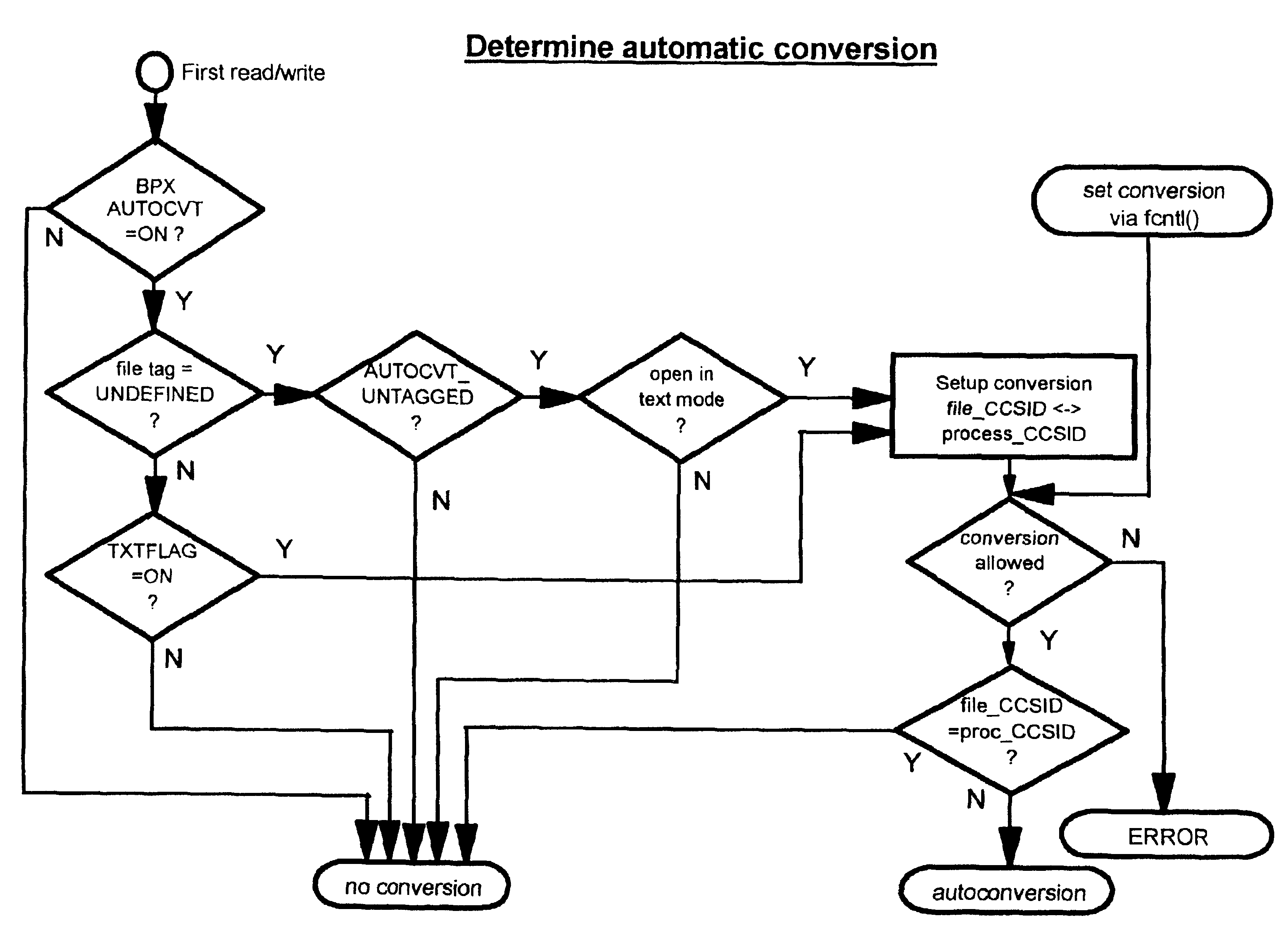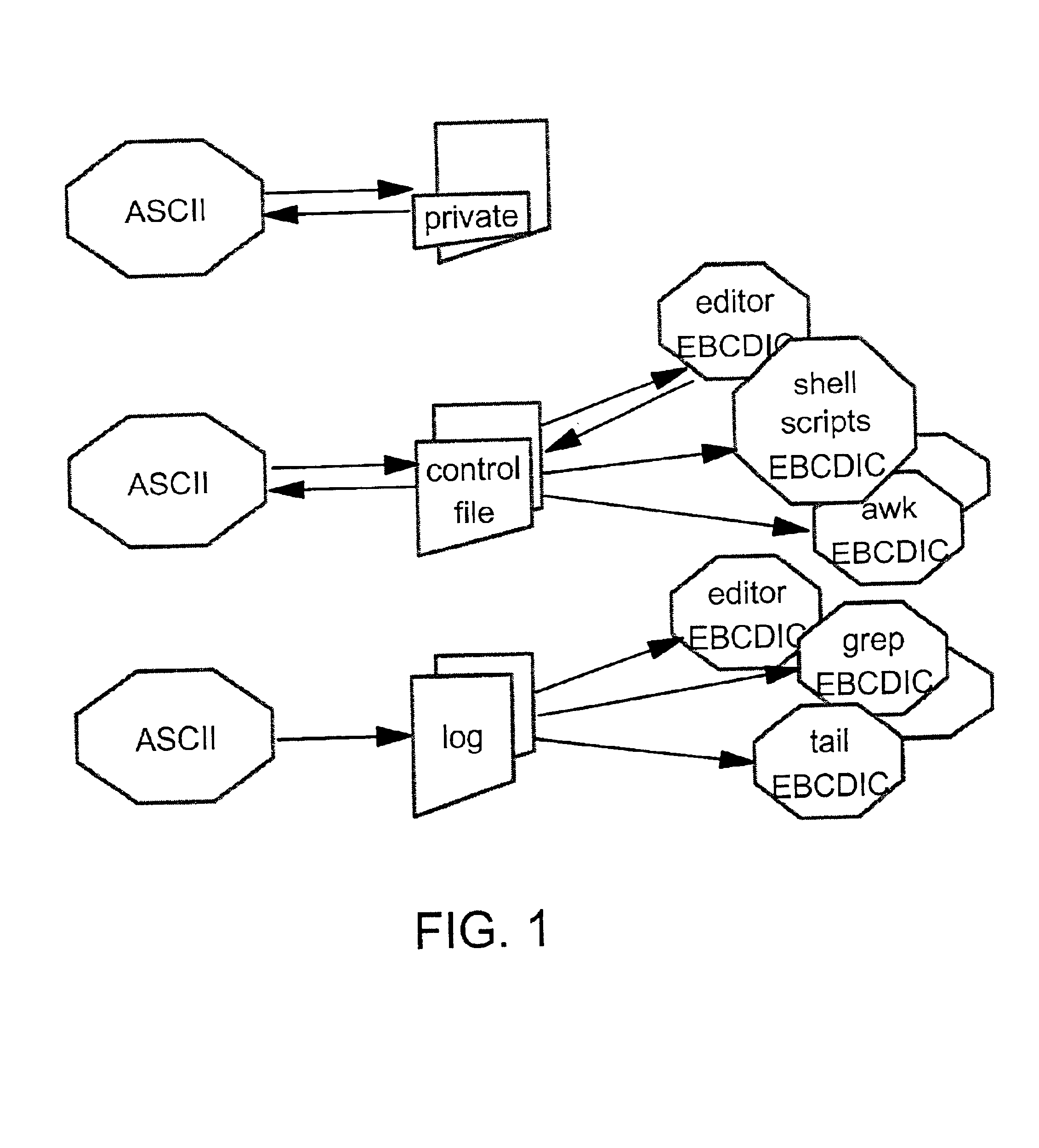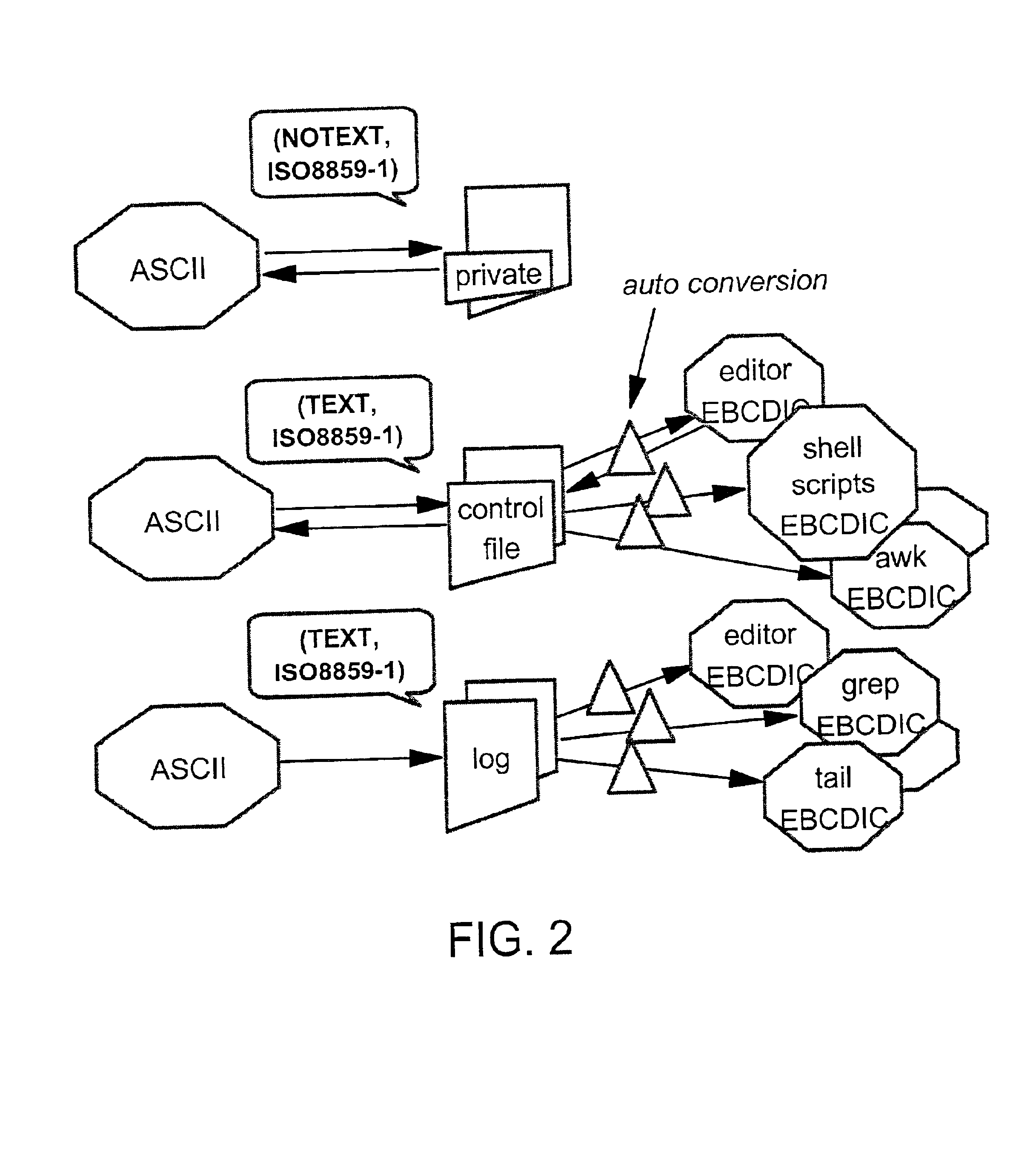File tagging and automatic conversion of data or files
- Summary
- Abstract
- Description
- Claims
- Application Information
AI Technical Summary
Benefits of technology
Problems solved by technology
Method used
Image
Examples
Embodiment Construction
[0028]The present invention, especially the creation and use of file tags, will be summarized as follows.
[0029]Preferably a new compiler option PROGRAM (EBCDIC|ASCII) is used to indicate whether initialization should set up an EBCDIC or an ASCII CODESET. The program option will also tell the compiler whether to generate EBCDIC or ASCII character literals and string literals in the program object. The program object attribute which identifies the CODESET (ASCII or EBCDIC or UNICODE) of the compiled program is laid down in the header of the main entry point of the program object.
[0030]Each newly created file has a tag containing an identifier for text information and a codepage attribute. The file tag is stored together with the other attributes of the file in the file system, e.g. file directory. The file directory is extended with tag information by means of runtime and the I / O access method. The following tag situations may be distinguished:[0031]1. Untagged local files: A default ...
PUM
 Login to View More
Login to View More Abstract
Description
Claims
Application Information
 Login to View More
Login to View More - R&D
- Intellectual Property
- Life Sciences
- Materials
- Tech Scout
- Unparalleled Data Quality
- Higher Quality Content
- 60% Fewer Hallucinations
Browse by: Latest US Patents, China's latest patents, Technical Efficacy Thesaurus, Application Domain, Technology Topic, Popular Technical Reports.
© 2025 PatSnap. All rights reserved.Legal|Privacy policy|Modern Slavery Act Transparency Statement|Sitemap|About US| Contact US: help@patsnap.com



